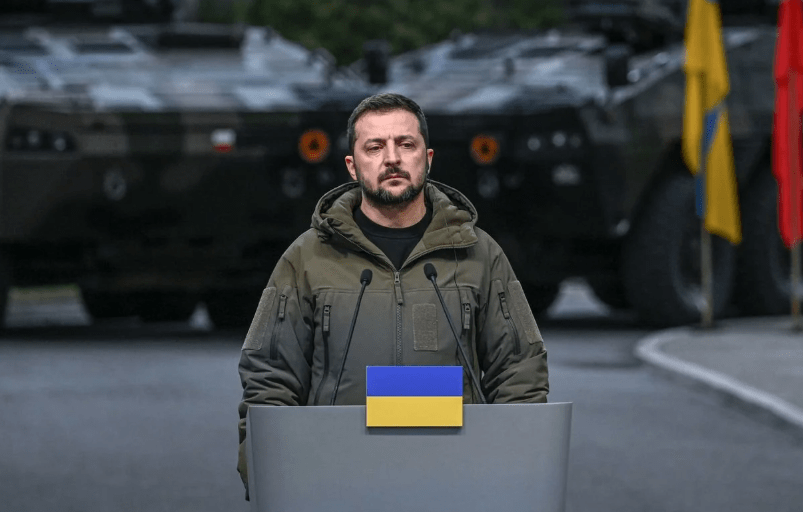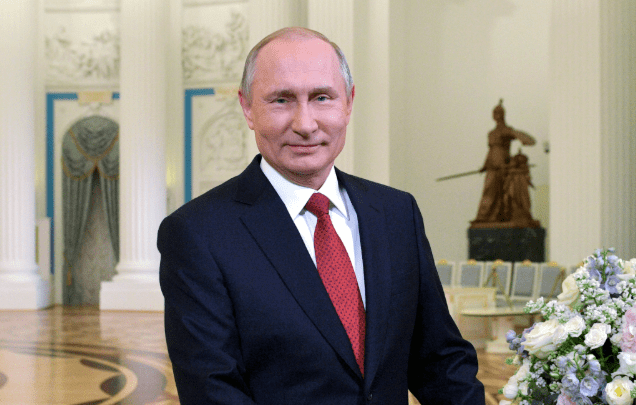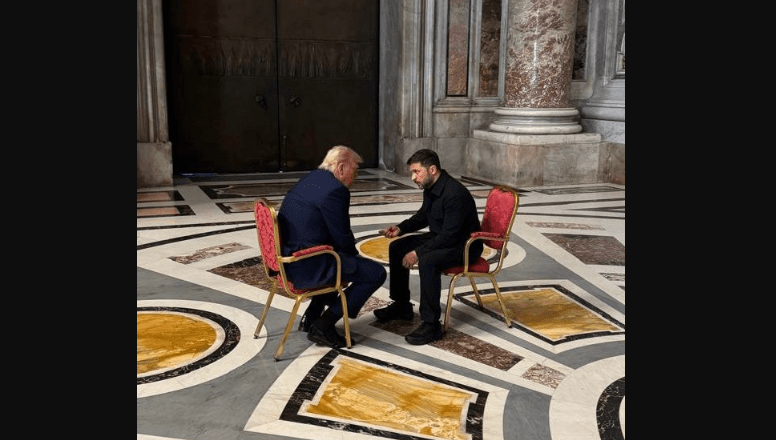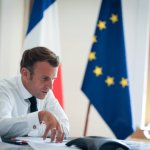As U.S. President Donald Trump nears his 100th day in office, a ceasefire deal in Ukraine is reportedly within reach — but its terms and implications have sparked alarm. Trump once claimed he could end the war in just 24 hours. So far, the reality has proved more complicated.
Officials in Washington are cautiously optimistic, yet deep scepticism lingers. Even if a deal is struck, analysts say it will be more of a pause than a permanent end to Russia’s revanchist agenda.
“We’re close, but we’re not close enough,” U.S. Secretary of State Marco Rubio said over the weekend, adding that the Trump administration is willing to “walk away” if necessary — a warning echoed by Trump himself.
That said, recent diplomatic engagements have encouraged the White House. Trump held a brief 15-minute talk with Ukrainian President Volodymyr Zelenskyy during Pope Francis’ funeral — their first meeting since a heated Oval Office exchange in February. Both parties described the encounter as positive.
Zelenskyy even called it potentially “historic.” Also, a separate meeting between Russian President Vladimir Putin and Trump’s Middle East envoy, Steve Witkoff, was described by U.S. officials as “productive.”

But tensions are rising. Trump has publicly berated Zelenskyy since taking office, while reserving a noticeably softer approach for Putin, the very man who instigated the conflict. Witkoff has echoed Kremlin narratives and even claimed Putin prayed for Trump after the failed assassination attempt on the U.S. president last July.
That tone shifted slightly last week when Trump, for the first time, issued a public reprimand. Following a deadly Russian assault on Kyiv, Trump posted on Truth Social: “Vladimir, STOP!” and said he was “not happy” with the attack. He even floated fresh sanctions against Moscow.
A Bad Deal for Ukraine
Despite the diplomatic theatre, the potential deal remains largely unchanged from previous proposals.
Key elements include:
- Ukraine permanently barred from joining NATO.
- De facto recognition of Russian control over annexed territories.
- U.S. acknowledgement of Crimea as Russian.
- Sanctions on Moscow to be lifted.
- Kyiv must grant the U.S. 50% of mineral revenues.
- The Zaporizhzhia Nuclear Power Plant, still under Ukrainian control, will be mandated to provide electricity to both Ukraine and Russia.
In exchange, Ukraine is supposed to receive “robust security guarantees” from European allies and other friendly nations. But details are sparse, and critically, the U.S. won’t be directly involved in these assurances.
That’s not the only concern. There’s no sign Russia will pay compensation for the devastation it caused. There’s also no plan to hold Moscow accountable for war crimes. This deal leaves Ukraine fragmented and exposed.
This isn’t the muscular peace strategy once promoted by Trump’s sidelined envoy for Ukraine, Keith Kellogg.
“We tell the Ukrainians, ‘You’ve got to come to the table, and if you don’t come to the table, support from the United States will dry up.’ And you tell Putin, ‘He’s got to come to the table and if you don’t come to the table, then we’ll give Ukrainians everything they need to kill you in the field,’” Kellogg said.
Only half of that plan made it into action. Ukraine is the one making concessions. Russia, meanwhile, gets rewarded.
This would be the first time since World War II that European borders are redrawn through armed aggression, setting a dangerous precedent.

Some in the Trump camp argue this outcome was inevitable. Critics of Western strategy say Ukraine’s full restoration was never feasible.
They point out that if NATO and its allies had reacted more forcefully in 2022, things might have been different.
Former Russian diplomat Boris Bondarev reflected on this lost opportunity: “Russian troops could have been defeated and expelled from Ukraine back in 2022, if the West had initially taken a tough stance toward Russia, and Ukraine had received the necessary amount of weapons.”
Instead, the West hesitated. Sanctions failed to cripple Russia. And the war of attrition played to Moscow’s strengths.
The hope that economic pressure alone would break Putin’s resolve was always a fantasy. And NATO membership for Ukraine? Moscow was never going to allow that.
This deal — if signed — won’t bring closure. It offers a ceasefire, not a solution. Ukraine is left weakened. Russia remains emboldened. There’s no real deterrent, no accountability, and no lasting security arrangement in sight.
It echoes the failures of the 1994 Budapest Memorandum — a paper promise that left Ukraine vulnerable. As former Defence Minister Oleksii Reznikov noted: “They may sign documents, but whether they keep to agreements is another matter… After 30 years, the Russians did just that — they tricked us.”
With the potential collapse of Zelenskyy’s presidency and internal political chaos looming, Ukraine could fall even further into instability. And Putin? He’ll likely seize on this division, biding his time for the next move.
This isn’t peace. It’s an intermission.






